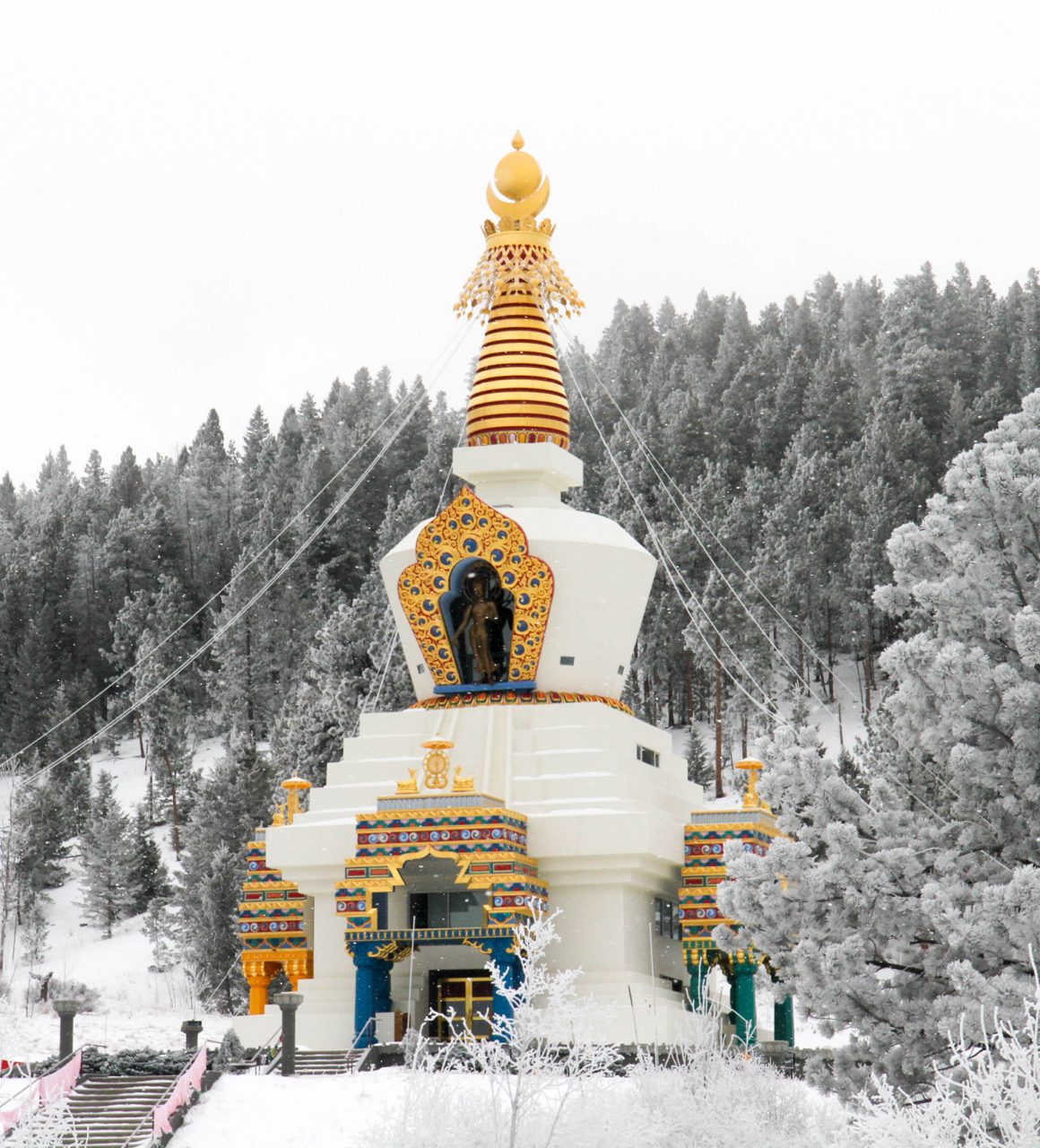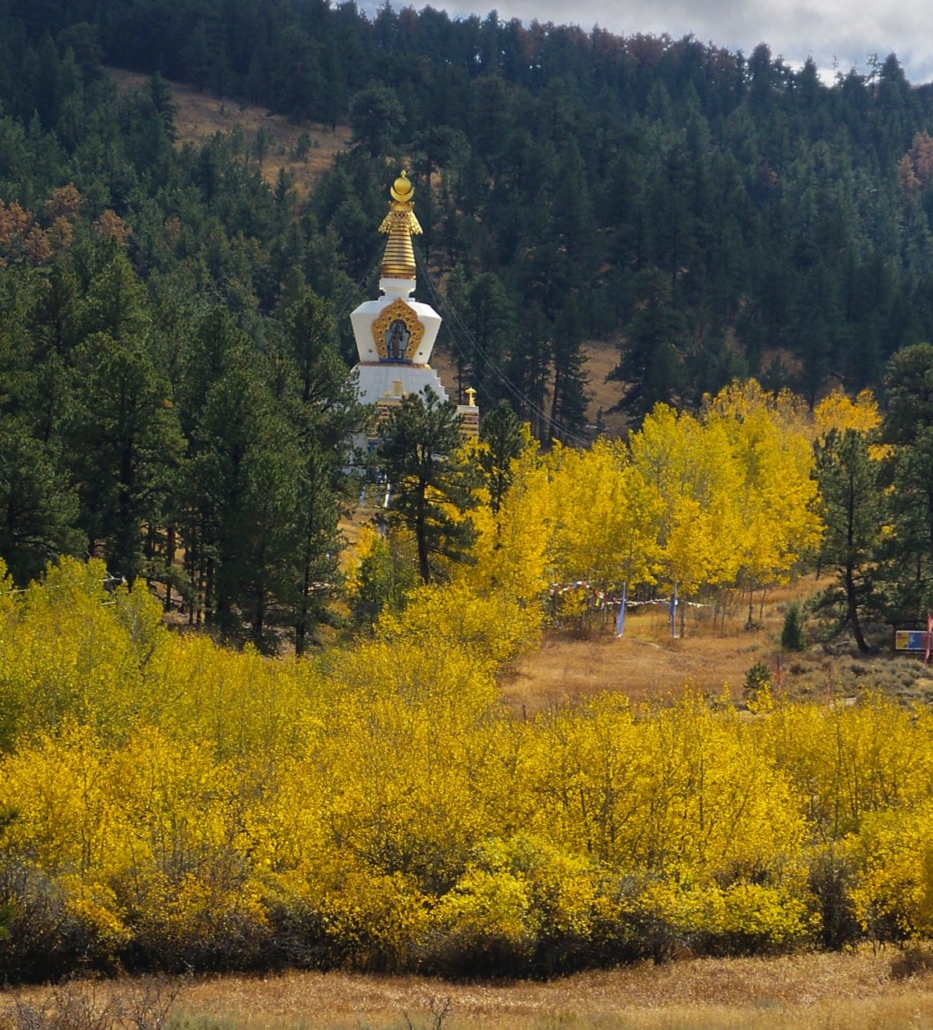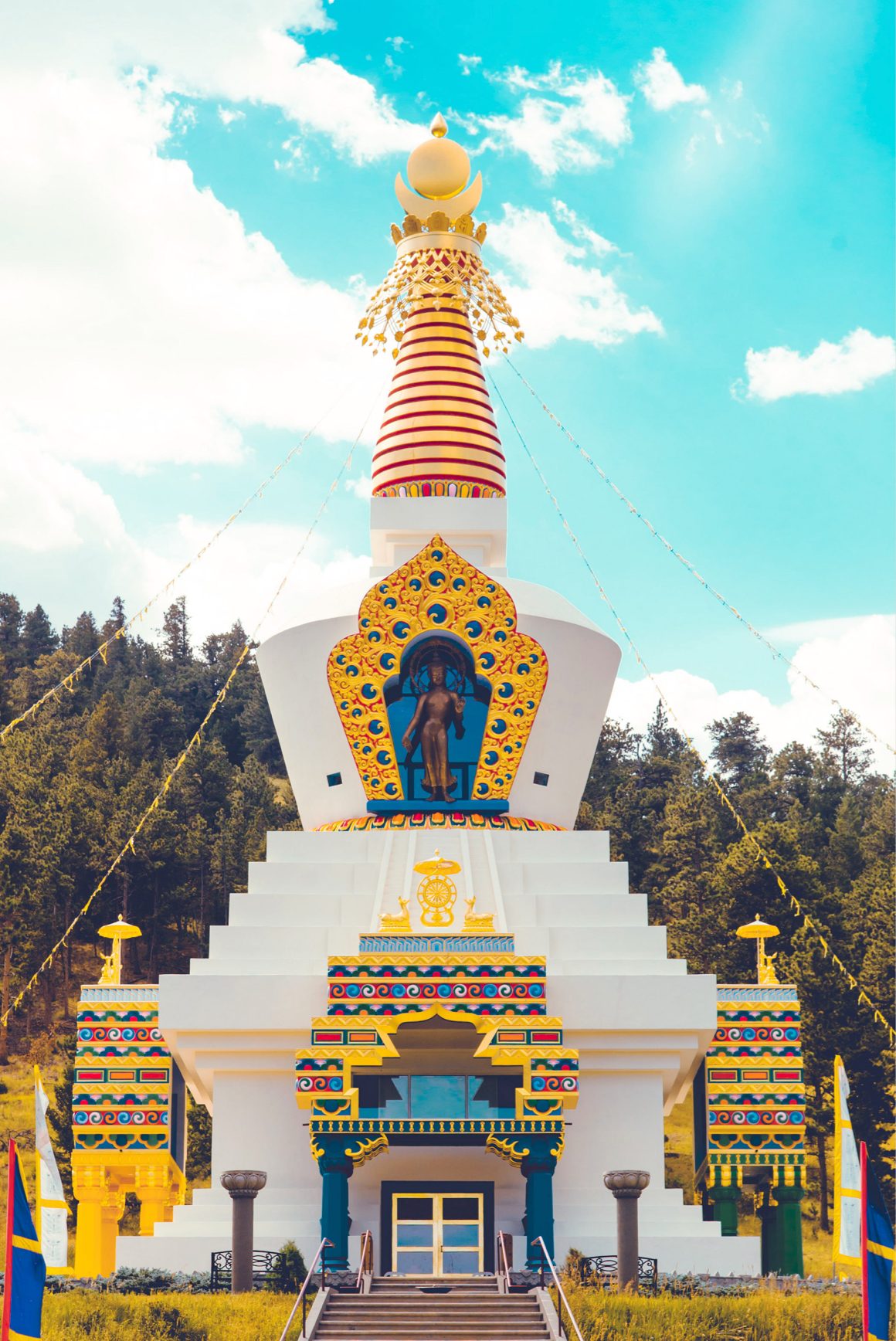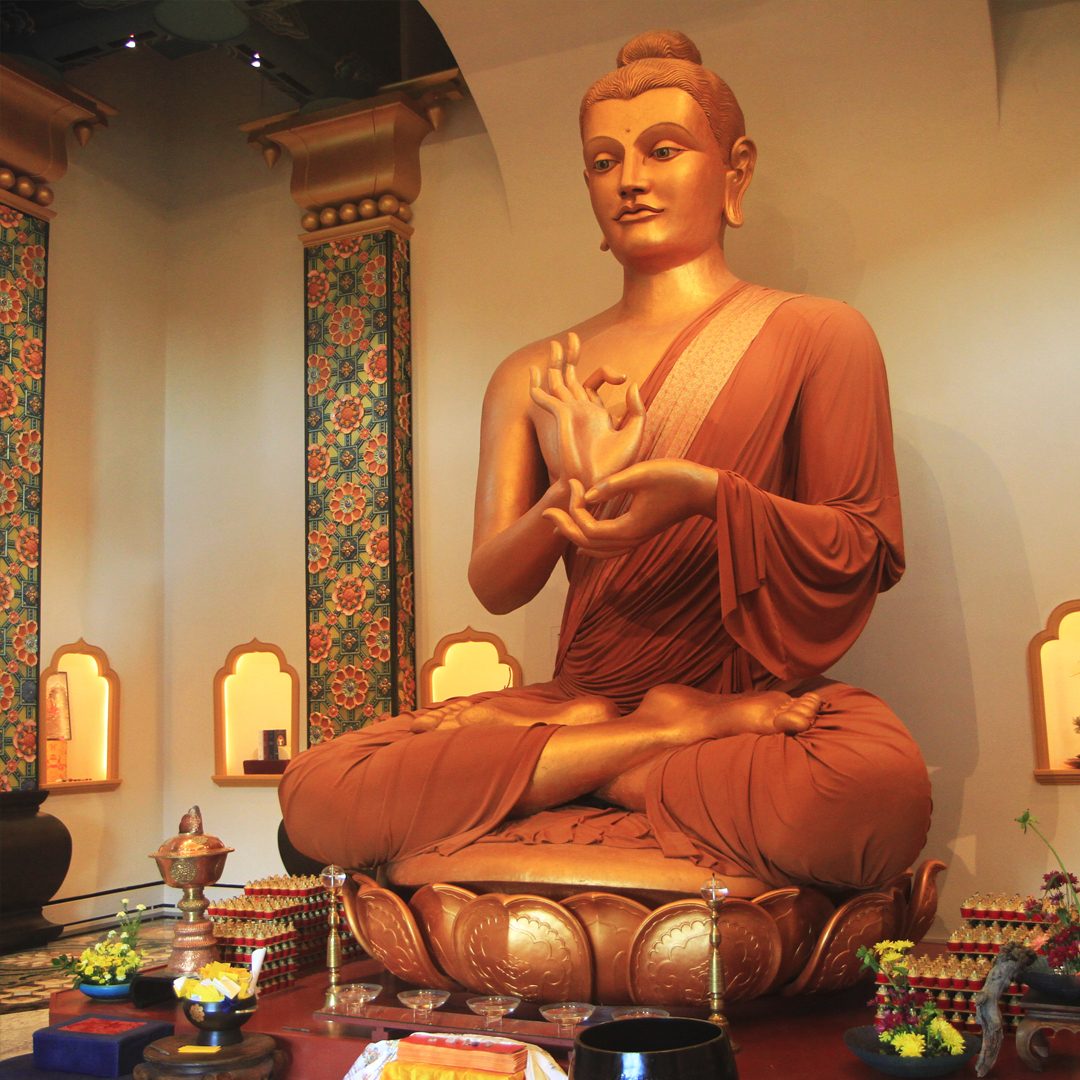The Great Stupa of Dharmakaya
Rising among wooded hillsides, The Great Stupa of Dharmakaya crowns a meadow at the upper end of Drala Mountain Center’s main valley. Standing 108 feet tall, it is one of the most significant examples of sacred Buddhist architecture in North America. Built in honor of the Center’s founder, Chögyam Trungpa Rinpoche, the Great Stupa of Dharmakaya serves as an inspiration for peace and compassion throughout the world.
Which Liberates Upon Seeing
The Great Stupa is sited between two powerful landforms: the promontory known as Marpa Point and the steep cliffs opposite it. The power of the stupa balances and brings together the energies of the surrounding environment; at the same time, it embodies the wisdom and blessings of Trungpa Rinpoche, as well as the Buddhist and Shambhala lineages.
“The Great Stupa of Dharmakaya Which Liberates Upon Seeing” is the name given to the stupa by H.H. Dilgo Khyentse Rinpoche.
Construction of the Great Stupa was initiated in 1988 and continues to this day. The primary construction phase occurred over a 13-year period, employing the generosity of several hundred volunteer laborers and craftspeople, with money donated through annual fundraising events. Additional contributions of expertise came from many different sectors of the technical industry.
Visiting the Stupa
After a long closure due to the COVID-19 pandemic, then due to the Cameron Peak Fire, The Great Stupa is once again open to visitors. While the Stupa did not burn, it sustained damage from smoke and soot. Restoration work continues.
To prepare for your visit, please wear comfortable shoes, bring sun protection and a water bottle. We are located at 8,000 feet so it is easy to become dehydrated.
See Getting Here for the safest and most convenient route to Drala Mountain Center. Most GPS devices and online mapping websites take you through Poudre Canyon, where road conditions can be challenging during wet and winter seasons
Great Stupa Symbolism
The Great Stupa of Dharmakaya was built in honor of the great meditation master, author and artist, Chögyam Trungpa Rinpoche shortly after his death. The finest and most enduring materials have been used throughout the structure, which was constructed using concrete that was formulated to last 1,000 years.
The shape of the Stupa represents the Buddha, crowned and seated in the meditation posture on a throne. His crown is the top spire; his head is the square at the spire’s base; his body is the vase shape; his legs are the four steps of the lower terrace; and the base is his throne.
The Stupa stands 108 feet tall and contains three levels.
Level 3:
The third vase-shaped level of the Stupa houses a round chamber 19 feet in diameter and 16 feet high containing a statue of Vajrasattva. This chamber contains a three-dimensional Chakrasamvara mandala, as well as statues, paintings and frescoes throughout.
On top of this level is the spire, which consists of 13 disks representing stages of enlightenment that narrow at the top, crowned by a golden moon, sun and jewel.
Level 2:
The second level, reached by interior stairs, contains a small chamber, 32 feet square and 14 feet high.
Level 1:
A 48-foot square base with gates, stairways and openings on all four sides form the lower level. Inside is an assembly hall 33 feet square and 24 feet high. In its center is a large, golden statue of the Buddha sculpted in the Gandharan style.
Most stupas are sealed monuments. A most unusual aspect of The Great Stupa of Dharmakaya is that the hall on the first level is open to the public.
The stupa interior features extensive artwork, design and statuary styled to reflect Trungpa Rinpoche’s lineage, as well as his interest in Japanese aesthetics and his teachings on the ancient Shambhala kingdom.
The Stupa of Dharmakaya is called a Lha Bab choten; it specifically commemorates the Buddha’s descent from Tushita heaven where he taught his mother. The steep stairway just below the big portal opening (gau) high up in the round vase chamber (bumpa) symbolizes this descent.
At the top of the stairway in the portal is a large sculpture of a standing Buddha. This is a unique feature of the Great Stupa not found elsewhere. It symbolizes Trungpa Rinpoche’s distinct ambulatory style of teaching in the West.
The Great Stupa holds the entire skull relic of Trungpa Rinpoche. It is placed in the heart center of the 20-foot-high golden Buddha seated on the ground floor. In this manner, the Great Stupa retains its earliest symbolic function: a chamber or motherly womb that can transform the seeds of the past into the life forms of the future.
A terraced park, nearly 200 feet in diameter and adorned by green lawns, trees, gardens and walkways, surrounds the Stupa.
For more information on the History of Stupas please download this PDF.
Please note: Dogs and other pets are not allowed at DMC.





